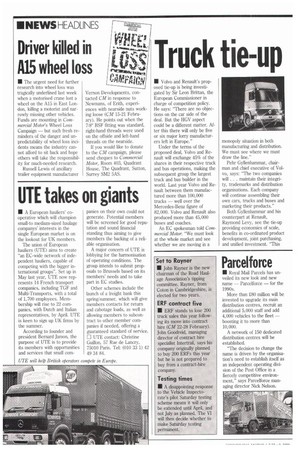Truck tie-up
Page 6

If you've noticed an error in this article please click here to report it so we can fix it.
• Volvo and Renault's proposed tie-up is being investigated by Sir Leon Brittan, the European Commissioner in charge of competition policy. He says: "There are no objections on the car side of the deal. But the HGV aspect could be a different matter. After this there will only be five or six major lorry manufacturers left in Europe."
Under the terms of the proposed deal, Volvo and Renault will exchange 45% of the shares in their respective truck and bus operations, making the subsequent group the largest truck and bus builder in the world. Last year Volvo and Renault between them manufactured more than 100,000 trucks — well over the Mercedes-Benz figure of 82,000. Volvo and Renault also produced more than 45,000 buses and coaches.
An EC spokesman told Commercial Motor-. "We must look at the whole market and see whether we are moving in a
monopoly situation in both manufacturing and distribution. We must see where we must draw the line."
Pehr Gyllenhammar, chairman and chief executive of Volvo, says: "The two companies will. . . maintain their integrity, trademarks and distribution organisations. Each company will continue assembling their own cars, trucks and buses and marketing their products."
Both Gyllenhammar and his counterpart at Renault, Raymond Levy, see the tie-up providing economies of scale, benefits in co-ordinated product development, joint purchasing, and unified investment. "This








































































































































